Table of Contents
- Dream Sequences: Avoiding the Lazy Screenwriter’s Crutch
- Treading the Line Between Surreal and Reality in Dream Sequences
- Dream Sequences That Create Subjectivity
- Allow the Dream to Influence Your Characters and Their Arcs
- Make the Dream Ask a Question
- Dream Sequences as Part of the Story Structure
- In Summary
Dream Sequences: Avoiding the Lazy Screenwriter’s Crutch
It was all a dream! First the audience gasps. Then they sigh and roll their eyes. Through overuse and poor execution, dream sequences have unfortunately become a lazy screenwriting tool that often offers little to the overall story.
How many times does an audience have to witness a character die a horrific death only for them to spring upright in bed? It can seem a cheap tactic, one that attempts to heighten the stakes for the audience whilst simultaneously creating no lasting consequences. Quite simply, it is a fake-out.
In addition, screenwriters have begun to lean on the dream sequence as an easy way to communicate exposition. This is because they are trying to follow the age-old rule of screenwriting, ‘show don’t tell‘. However, rather than trying to find ways to visually communicate a character’s backstory or motivations within the story, they slap it in a dream sequence and hope for the best.
By doing so, they are missing out on what makes dream sequences so powerful. What is more common to the human experience than our nightly hallucinations? Dreams are a uniquely human concept. You can use them to delineate a character’s complex nature in a subconscious rendering of their innermost thoughts, feelings and fears.
If you use dream sequences to convey themes, influence your character arcs or even make them part of the story structure itself, then there is a place for them in your screenplay. Don’t use them as a crutch, or a way to solve a plot hole. Just use them as a visually interesting way to tell your story that may, in turn, help your screenplay stand out.
Treading the Line Between Surreal and Reality in Dream Sequences
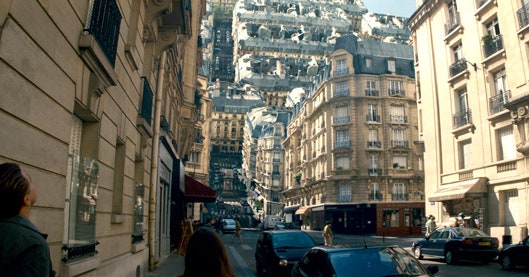
Dreams have often provided writers with fascinating material from which to work their magic. After all, everybody dreams. Therefore, you would think dreams would be an easy thing to write about.
You think that because anything can happen in a dream then surely anything can happen in your dream sequence. You begin to create wild landscapes of immense possibilities, where anything goes. Alas, all you have succeeded in doing is pulling your audience right out of the story.
Unfortunately, dreams’ colourful and chaotic natures, the very thing that makes them so vibrant and interesting, is also what makes them difficult to realistically create. Poorly written dream sequences generally fall into one of two mistakes…
- The sequences throw all logic and reality to the wind in favour of bombarding the audience with surreal imagery and madhouse chaos.
- This is effective if all you are trying to do is treat the audience to a moment of visual spectacle.
- However, it also succeeds in highlighting the artificiality of the dream by stretching the audience’s suspension of disbelief too far.
- It may be a fun way to demonstrate how imaginative you are but it doesn’t do much to serve the story or your characters.
- The sequence behaves too much like reality.
- The scene is therefore much better able to service the characters and plot because as far as the audience is concerned nothing has changed.
- However, in doing so you lose the fantastical elements that make the dream sequence so special in the first place.
- The sequence might as well not be a dream at all. As far as the execution is concerned, it may as well just be a flashback.
Apply Consistency and Logic to the Chaos
So before you sit down to write your dream sequence, you must devise a balance between writing a surreal scene and one that simply appears like everyday life. Too much chaos and the audience will fail to see the point your sequence is trying to make. Too much realism and the sequence stops becoming a dream at all.
Films such as Inception and Eternal Sunshine of the Spotless Mind expertly achieve this middle ground to create powerful dream sequences.
- The former employs dreams as a form of espionage to infiltrate someone’s mind. The latter creates dreams as part of a memory-erasing programme.
- Both premises of the dream sequences sound pretty outlandish. But they manage to tip the scale in an even direction by applying their own rules. During the set up of both films, the audience learns the clear guidelines of how the dreams work.
- In Inception, we know all the dreams have an architect that designs the dreams, which the dreamer then fills with their subconscious.
- In Eternal Sunshine of the Spotless Mind, we know that each dream represents a memory that will appear in reverse order and start to fade as it begins to erase. Whilst these are arguably memories rather than dreams, the way they manifest cinematically is as dreams, particularly as Joel lies asleep as his memories are accessed.
These films don’t strain the audience’s suspension of disbelief by breaking the reality of the world. They follow the rules they established themselves in the opening act. By doing so, they make true chaos believable.
In other words, they create realistic dreams where audiences can enjoy surreal moments without losing track of the story’s reality.
Dream Sequences That Create Subjectivity
After finding the delicate balance that must exist within your dream sequence, you then need to determine what function this storytelling device will play in your screenplay. The first and most notable example of the use of dream sequences in screenwriting is to create moments of subjectivity for your audience.
Subjectivity is creating the experience of thinking or feeling like one of your characters. It is a mental representation of an event rather than a physical one.
Filmmakers bring the audience into their characters’ minds through clever camera tricks, editing, lighting or sound. Screenwriters do the same thing in different ways. They find means to translate complex human emotions through a character’s interactions, conflicts and transformations.
What the dream sequence provides then is an opportunity for writers to delve into the emotions deep within a character. They can weave together memories or longings so that the audience can experience a character’s subconscious thoughts and feelings.
These could be things the characters themselves didn’t know, things they are too afraid to admit to others or things they bury deep within their mind. Whatever the case, the key to writing a powerful dream sequence is that they become a visual way to communicate your character’s mental state. By doing so, you provide a less objective look at that character and go deeper, beyond their senses and into their mind.
Keeping with our two previous examples, you will see how the filmmakers of Inception and Eternal Sunshine of the Spotless Mind utilized their dream sequences to make the audience experience their protagonist’s deepest emotions.
Inception
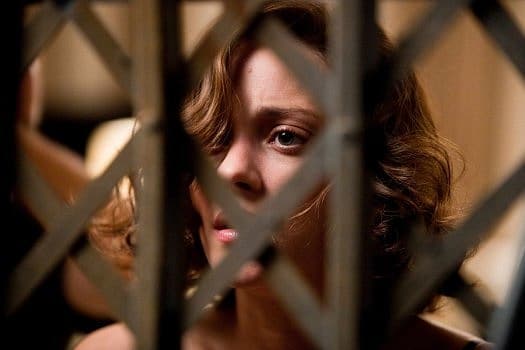
During one of the many dream sequences in Inception, the audience sees that the central character, Cob, is using the dream-sharing device to visit past memories. These include his dead wife, Mal, whose suicide Cob feels personally responsible for. The filmmakers use this particular scene to demonstrate Cob’s inner guilt, which drives him throughout the story.
Each memory represents the floor on an elevator, each containing moments that Cob regrets. All he has succeeded in doing is building a prison of memories where his wife is alive and he goes to torture himself every time he dreams.
The audience takes a tour of Cob’s guilt throughout the sequence. It ends in the basement, where he hides the night of Mal’s death and where the iron bars of the elevator holds her projection inside. The audience witnesses how deep the character has tried to bury these feelings and how much he is ashamed by them.
Eternal Sunshine of the Spotless Mind
In the final dream sequence of the film, Joel is reliving the last (but also the first) memory of him and his ex-girlfriend in an empty house by the sea. Soon, the memory starts to erase and the house begins to crumble around them. The incoming waves wash away the remains of the house and the last remaining moments of his time with the women he once loved.
This sequence captures perfectly the fear and regret of a character who has chosen to fundamentally alter the man he is. Like the inevitability of the rising tide, there is nothing Joel can do to save the memories that once caused him so much pain but also gave him happiness.
Ironically, this sequence occurs just as the character has begun to gain a more accurate perception of what went wrong in his relationship. The audience gets to experience his subtle dread as he leaves behind these final moments alone in the dark, wishing he could have done differently.
Allow the Dream to Influence Your Characters and Their Arcs
One of the main arguments against many dream sequences is that they have no lasting impact on the characters or the overall story. You can attribute this to the previously mentioned fake-outs of characters dying in a dream and then suddenly waking up.
Take the dream sequence from Aliens as an example.
- Ripley lies in a hospital bed. Suddenly, she feels a horrendous pain in her chest.
- She rips backs her robe and sees an alien trying to push its way out, only for her to wake up in a sweaty mess.
Was it a cheap scare? Is it a screenwriting con? Not necessarily.
Ripley faces nightmares throughout the film as a direct result of the horrors she faced the first time the alien attacked. This is a specific character attribute that influences her character arc from beginning to end. She is haunted by what she experienced and attempts to warn the people she is with about the dangers they are facing.
We constantly see Ripley struggle with nightmares throughout the story. That initial dream sequence gives us a peek into her mind and those nightmares. Therefore, it resonates with us every time she awakens from her sleep, holding her chest.
That is how you create a powerful dream sequence. Not by duping the audience into believing that your character is about to meet their end but by allowing the dreams to influence your character’s actions and story arc far beyond the sequence itself.
Three Ways Dreams Can Compel Your Character
As mentioned, dream sequences need to be more than a page or two of surreal imagery. Dream sequences are scenes and they still need to act like them, helping develop your plot or characters in some way.
So before you start writing your dream sequence, you need to know what you intend to accomplish with the dream and what function it plays for your plot and characters.
1. The Realization Dream
- In a ‘realization dream’, something must “click” for your character in the dream. This could be something they have been struggling to figure out throughout your story.
- Perhaps your character’s latent desires, masked by strict conscience in the waking world, are thrown into sharp relief in a vivid dream sequence.
- This particular type features in American Beauty, where the lead character Lester starts having erotic dreams about a young woman covered in rose petals. The scenes accentuate Lester’s attraction and obsession with his daughter’s friend.
- It’s a truly vivid attraction and obsession, one that gives the audience context to what is going on in his mind every time his daughter’s friend appears in his life.
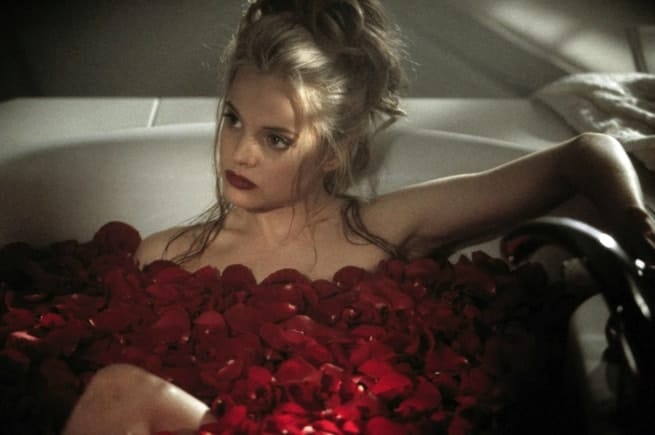
2. The Inner Conflict Dream
- This sequence shows a character struggling with an impossible choice.
- Using a dream sequence to colourfully illustrate internal turmoil can give a face to a character’s hidden agony and struggle.
- An American Werewolf in London utilizes this type of dream sequence to great effect. Newly bitten werewolf David Kessler hasn’t quite figured out what has happened to him yet. But his dreams help to show the audience the internal battle in his mind.
- When mutant Nazis invade his peaceful home and start to murder his family, it is a sign to the character that dangerous forces have gained control of his mind. Turning into a werewolf is bound to wreak havoc on one’s subconscious and his dreams tell him that he no longer has any control over his life.
3. The Premonition Dream
- During this sequence, you give your character a possible glimpse of the future events.
- You should use this dream type sparingly and with caution. If your characters can accurately predict the future with consistency, it can drain the tension right out of your story.
- This dream sequence works best if your character has prior knowledge of future events that might influence their character.
- In Terminator 2: Judgement day, Sarah Conor has a nightmare about the upcoming judgement day she was warned about, where America is destroyed by nuclear explosions. The horror of this vision alters her character further and prompts her to take action to stop it from coming true.
As a general rule of thumb for writing a dream sequence, ask yourself exactly why you’re including it. If you can’t come up with an answer other than, “because it will look awesome,” then the sequence probably isn’t going to serve your plot or your characters and therefore isn’t necessary to your story.
Make the Dream Ask a Question
Just coming up with a foreboding or interesting dream is not enough to keep an audience engaged as you essentially take a break from your story. Therefore, another key to writing powerful dream sequences is that you must frame them as dramatically as possible. This means that the dream sequence should aim to either ask or answer a dramatic question.
The dramatic question has to do with the central conflict involving your protagonist. The most interesting question in all of fiction is why. Why is this dream happening? Why does this dream matter? If you make your dream sequence ask a dramatic question of your protagonist, you’ll almost certainly hook an audience into the rest of your story by making them want the answer.
- Dream sequences are a great place to ask these difficult questions of your protagonist.
- This is because you have the rare opportunity to physically enter your character’s psyche.
- You can introduce opposing elements that could represent their inner conflict.
- Or you could turn the dream into a visual manifestation of the lessons your protagonist needs to learn.
Whatever approach you choose, your story should introduce thematic or character-driven elements that relate to the dramatic question. Then the dream sequence must accentuate these themes and character moments, or vice versa. The sequence should always either be booked-ended by a question being raised or a question being answered and then later applied to your story’s events.
This way, the dream sequence becomes a unique way of introducing the elements of your screenplay. Looking at the example of Black Panther, you will see how its dream sequences aim to answer the dramatic question of the story and how this affects the protagonist during the remainder of the film.
Black Panther
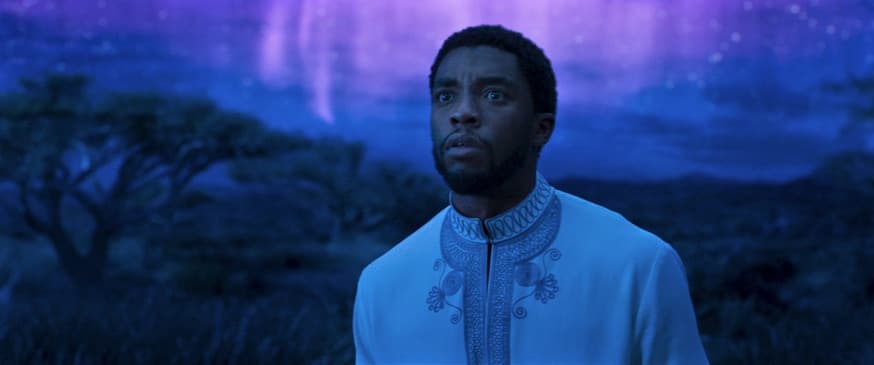
Throughout Black Panther, the protagonist T’Challa faces two separate dream sequences where he enters an ancestral plane to speak with his father’s spirit. The sequences occur towards the beginning and end of the film. Both aim to ask T’Challa the same dramatic question: What kind of king do I want to be?
- As the story begins, T’Challa believes Wakanda should hide away from the world.
- The audience sees in the first dream sequence that T’Challa wants to be a good king like his father and he thinks the best way to do that is to uphold tradition.
- That is the first answer to the dramatic question.
However, through the course of the film, the other characters, mainly the antagonist Erik Killmonger, challenge T’Challa’s beliefs. Erik is a walking reminder of his father’s failings. He’s an example of the people who have needlessly suffered because of Wakanda’s isolationism. He’s living proof that hiding from the world will not keep them safe. Therefore, it is clear that T’Challa’s answer to the dramatic question is wrong.
It is only by T’Challa confronting all of this that his beliefs start to change.
- When the second dream sequence arrives and the same question is put forward, the protagonist has a different answer.
- He declares that he and his father let the fear of Wakanda’s technology stop them from doing what was right and that they were wrong to turn their backs on the rest of the world.
After learning from the antagonist and facing his inner conflict within his dreams, T’Challa finally decides what kind of king he will be.
Dream Sequences as Part of the Story Structure
Dream sequences work best when you weave them into the structure of the story. One of the major reasons dream sequences often fail is that they don’t move the immediate plot forward. They simply feel like an annoying add on that the writer has chosen because they have run out of ideas.
However, when dream sequences are married to the structure you use to tell your story, they are no longer a tool; they are a part of the structure as a whole. If you bury the concept of dreams so far into the foundations of your story that they become a part of the fundamental premise, then no one can argue against their inclusion.
In addition, cementing dream sequences into the structure of your screenplay provides you with a fresh and interesting outlook into a particular genre or type of story that no one has ever seen before. This can turn a predictable and overused format into an entirely new concept. Just take the three basic premises from these films as an example and remove any mention of dreams.
Spot the Difference
- Inception– A group of thieves try to destroy a rich man’s company.
- A Nightmare on Elm Street– A terrifying ghoul with knives for finger kills a bunch of teenagers.
- Eternal Sunshine of the Spotless Mind– A man tries to forget his ex-girlfriend by removing everything that reminds him of her.
Inception sounds like a run of the mill heist film, A Nightmare on Elm Street sounds like just another slasher film and Eternal Sunshine of the Spotless Mind sounds like your everyday romantic drama. However, take the same premises and add the thing that makes them such original films in the first place and you get a completely different story.
- Inception– A group of thieves enter a man’s dreams to try to plant an idea that will destroy his company.
- A Nightmare on Elm Street– A terrifying ghoul with knives for fingers kills a bunch of teenagers within their dreams.
- Eternal Sunshine of the Spotless Mind– A man tries to forget his ex-girlfriend by removing her from his memories, accessed via his dreams.
As you can see, when the dream sequences become part of the structure and therefore your story’s premise what you’re doing is employing a different way of telling a cinematic story.
In Summary
Just like any other technique in screenwriting, dream sequences can be used as a powerful and unique way to tell your story. They give you the rare opportunity to enter your character’s mind and consequently allow your audience to experience what that character is thinking and feeling.
How you choose to visually render the subconscious is up to you, just be sure to not go completely overboard with the surreal imagery or miss the mark completely and create a dream entirely like reality.
Make sure you give your dream sequence a function to your overall plot and characters. The consequences of the sequence should be felt way after the character’s eyes have opened, be it in a change to your character’s arc, an influence on your character’s actions or a differing outlook on the dramatic question of your story.
The best dream sequences aren’t used as a crutch. They’re not used to solve a plot hole or as bad visual exposition. Instead, they’re used as an innovative way to tell your story. The best dream sequences act as a fundamental part of the story and its premise.
- What did you think of this article? Share It, Like It, give it a rating, and let us know your thoughts in the comments box further down…
- Struggling with a script or book? Story analysis is what we do, all day, every day… check out our range of script coverage services for writers & filmmakers.
This article was written by Stephen Harper and edited by IS Staff.
Get *ALL* our FREE Resources
Tackle the trickiest areas of screenwriting with our exclusive eBooks. Get all our FREE resources when you join 60,000 filmmakers on our mailing list!

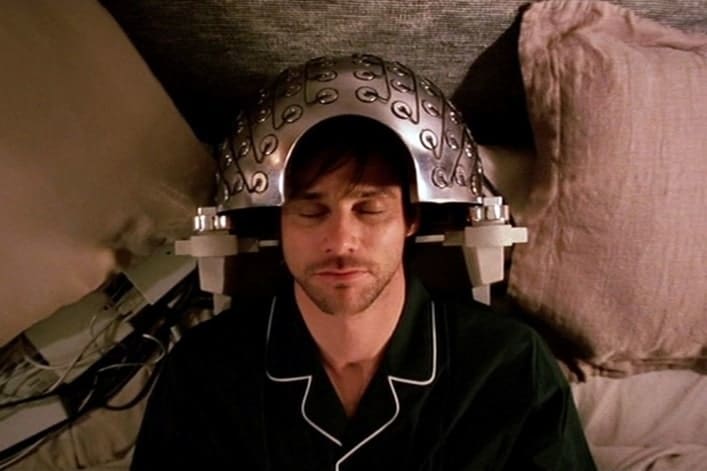
AWESOME!!!! Informative. I thought I could just “plop” a dream piece into my story – NOT. THANK YOU for the enlightenment.
Kellie
Thanks Kellie!